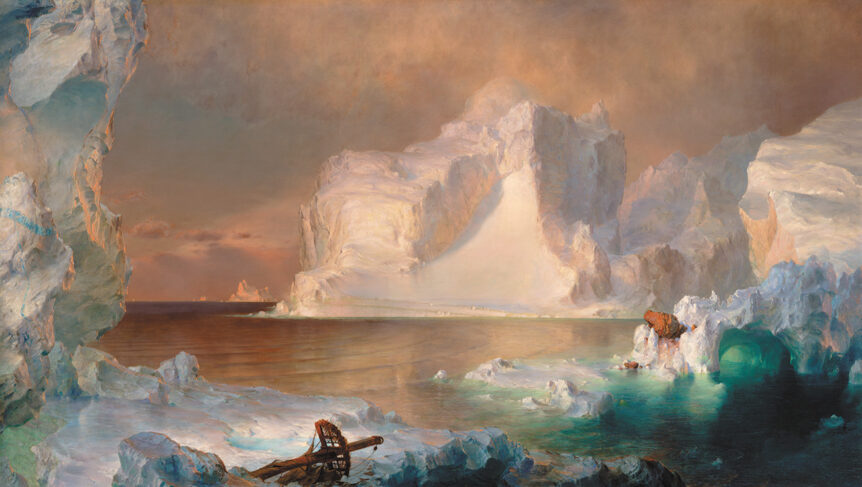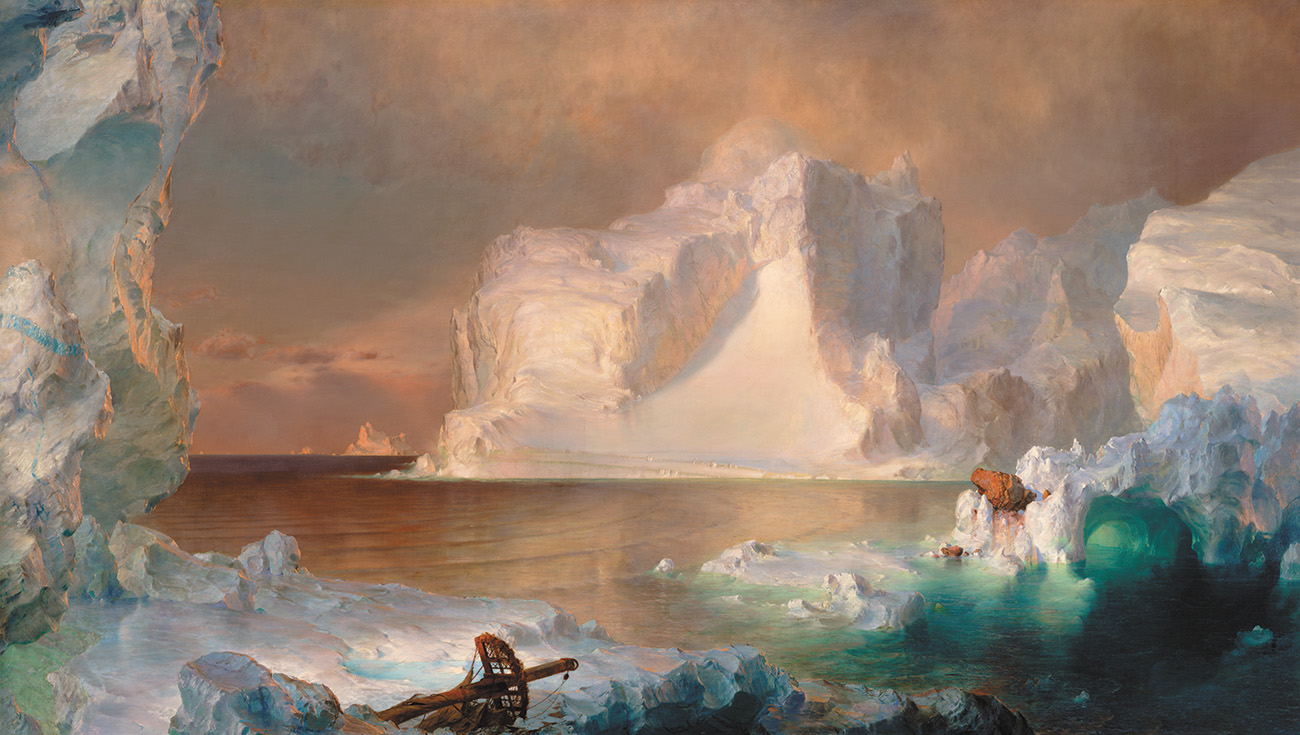
The Icebergs by Frederic Edwin Church (1826–1900), 1861. Dallas Museum of Art, Texas, gift of Norma and Lamar Hunt.
Olana—the historic estate of Hudson River school artist Frederic Edwin Church, with its faux-Persian mansion surrounded by a landscape devised by the painter as a living work of art—is hosting winter art exhibitions for the first time. The subject of the inaugural show is seasonally appropriate—the story behind The Icebergs, one of Church’s most famous “great pictures,” a forty-five square-foot depiction of forbidding mountains of ice afloat in the North Atlantic.
The Icebergs was the result of a sea voyage that Church took along the coasts of Newfoundland and Labrador in the summer of 1859. Arctic regions were much in the public mind at the time, following the disappearance of British explorers who embarked in 1845 to seek a Northwest Passage, and reports from the many subsequent expeditions that set out to learn their fate. Church completed The Icebergs in 1861, and arranged for single-painting exhibitions that spring in New York and Boston. (Admission price: 25 cents.) Shortly before the first show was to open, the Civil War broke out and Church, always a canny marketer, renamed the painting The North—an emblem of the coolheaded Union opposing the intemperate Southern rebels.
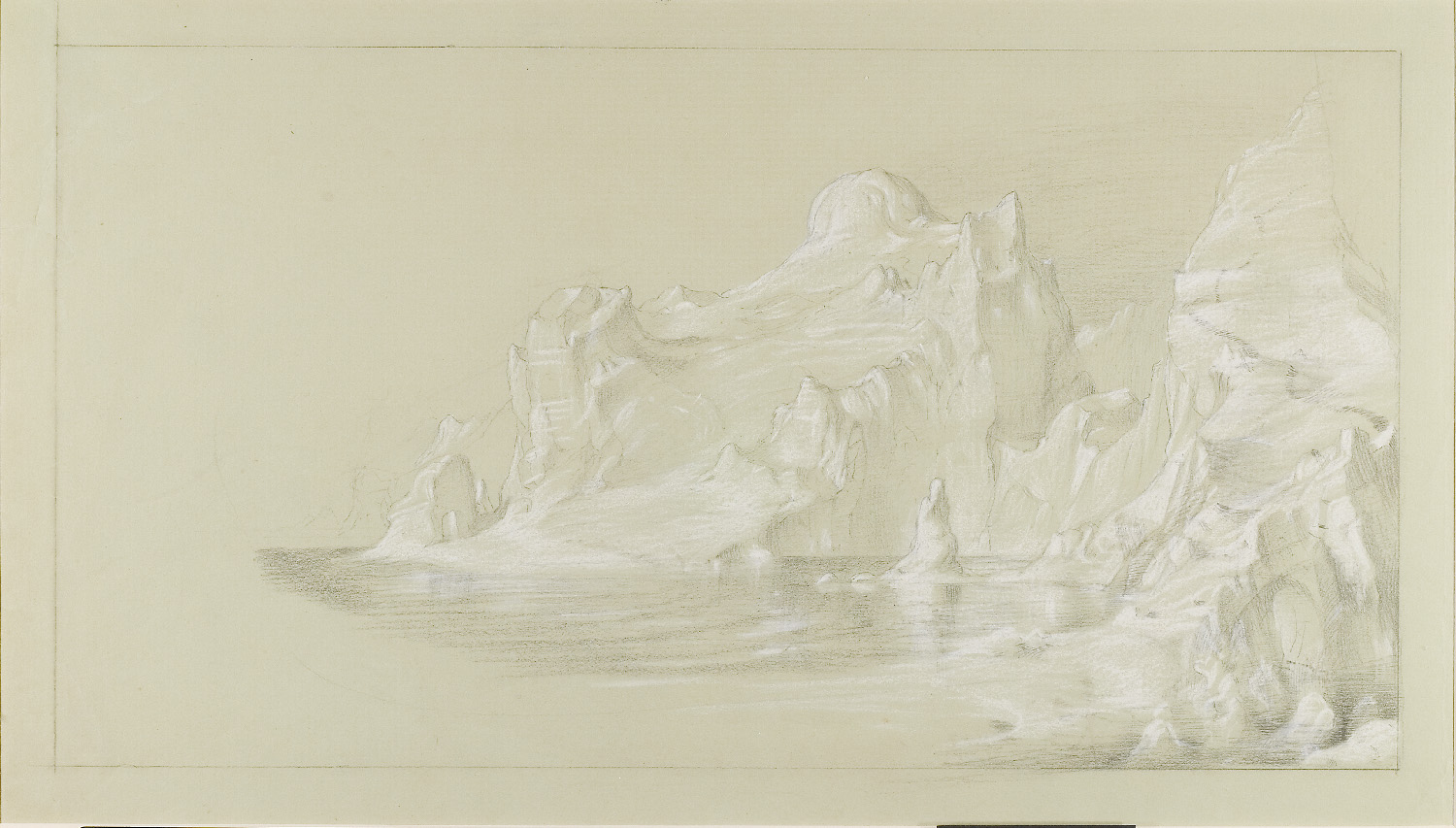
Study for ‘The Icebergs’ by Church, 1860. Except as noted, the objects illustrated are in the Olana State Historic Site, New York State Office of Parks, Recreation and Historic Preservation, Hudson, New York.
Amid the excitement over the war, Church’s painting did not create the sensation he hoped for, nor did it find a buyer. Before sending the painting to London for a show in 1863, Church restored the original title and painted a broken ship’s mast on a patch of ice in the foreground, a symbol of the doomed 1845 expedition. Acclaimed in Britain, the painting was soon purchased by a Manchester railroad magnate.
The Icebergs hung at his estate over the decades, gathering dust and losing significance to those who saw it. By 1978 the estate had become a social services home for boys. That year, the head of the facility (likely prompted by inquiries from an American scholar) rediscovered the painting and placed it at auction. It brought $2.5 million—then a record for an American painting—and the sale is credited with reviving interest in the Hudson River school. The buyer was Texas tycoon Lamar Hunt, who gave The Icebergs to the Dallas Museum of Art, its home to this day.
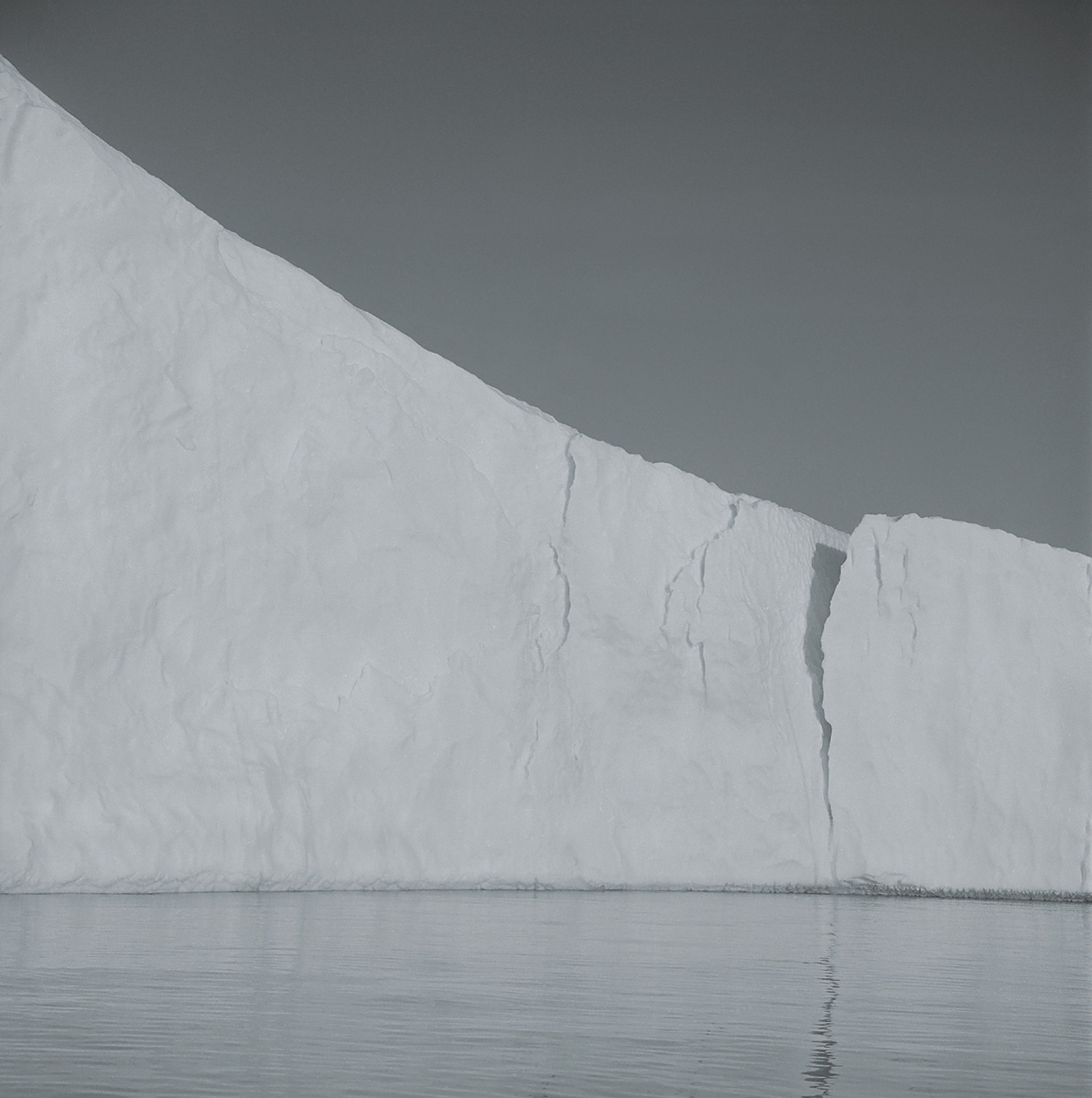
Iceberg XIV, Disko Bay, Greenland by Lynn Davis (1944–), 2007. Photograph © Lynn Davis, courtesy of Edwynn Houk Gallery, New York.
Olana’s exhibition, curated by William L. Coleman and Allegra Davis, tells the story of the making of The Icebergs and some of the painting’s later history through the preliminary drawings and oil sketches that Church made while on his travels around the Canadian coast, as well as historical photographs, accounts of the journey that the artist and his companions published, and other texts. As has become its custom, Olana has placed works by contemporary artists in dialogue with the historical art. These include photographer Lynn Davis’s Iceberg XIV,Disko Bay, Greenland—which depicts an iceberg on the verge of calving a section of itself into the sea—and Blue Ebb and The Chase by glass artist Kambui Olujimi. His hand-blown vessels in the shape of an hourglass contain iceberg-like forms and a pool of water—a reminder that time is running out for taking action on climate change.
Chasing Icebergs: Art and a Disappearing Landscape • Olana State Historic Site, Hudson, New York • to March 26 • olana.org
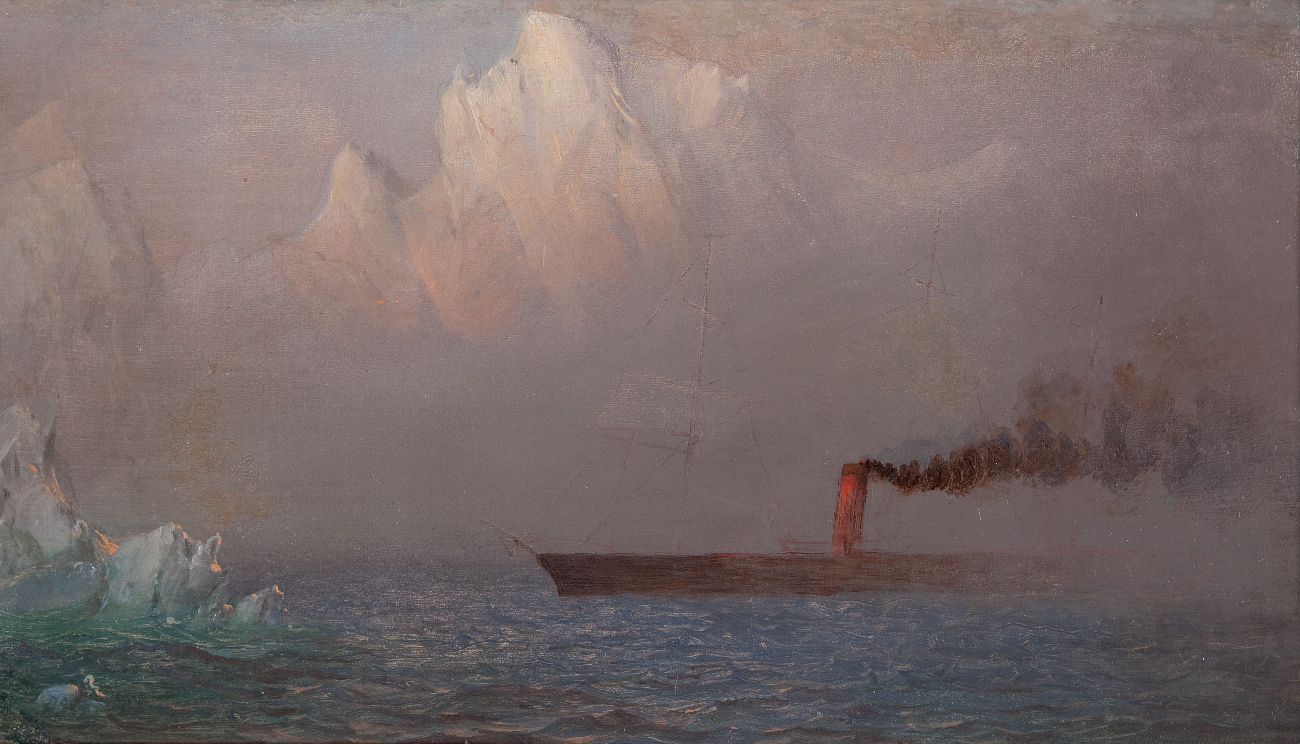
Steamboat in Northern Waters by Church, 1861–1865.

